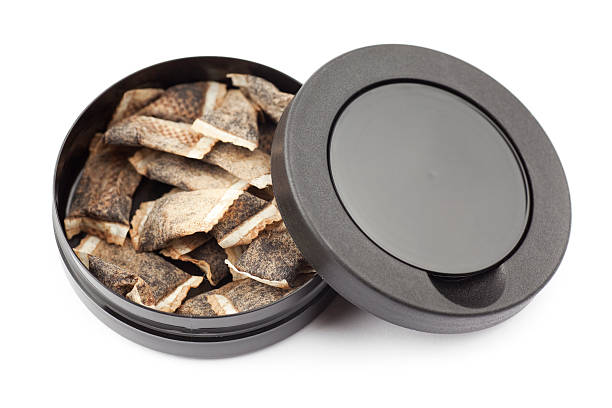- time:2025/10/21 posted:admin
In the modern tobacco market, thin boxes for snus have become a symbol of minimalist design and functional precision. The growing preference for sleek, pocket-sized containers reflects not only aesthetic trends but also deeper engineering challenges. Manufacturers must carefully balance portability with the structural integrity needed to preserve freshness and prevent deformation. The design of a snus box thus becomes a multidisciplinary study involving materials science, ergonomics, and consumer behavior.
1. The Evolution of Compact Snus Packaging
Over the past decade, snus packaging has evolved from bulky metal tins to lightweight, refined plastic cases. This transition was driven by the increasing mobility of consumers and the desire for convenience in everyday use. However, the push toward thinner formats has introduced new technical questions. How can a box remain rigid while maintaining a compact silhouette? How can manufacturers ensure airtight sealing when material thickness is reduced?
To achieve these objectives, designers began integrating reinforced polymer composites and advanced molding techniques. These materials deliver both structural strength and dimensional stability, allowing the walls of thin snus boxes to remain resistant to bending or cracking under pressure. Additionally, nanocoating technologies have improved resistance to moisture and odor transfer, further extending product freshness.

2. Material Hardness and Structural Integrity
Material hardness is central to the design philosophy of thin snus boxes. A higher Shore hardness value enhances protection but may compromise tactile comfort and portability. Conversely, softer materials improve hand feel but risk deformation under compression. Therefore, the ideal hardness range typically falls between medium and semi-rigid thermoplastics, such as polypropylene (PP) or acrylonitrile butadiene styrene (ABS).
These materials maintain elasticity under stress while offering sufficient rigidity to safeguard the contents. Engineers also incorporate ribbed inner walls and micro-frame reinforcement zones, which distribute external force evenly across the surface. This mechanical optimization ensures that the thin profile does not sacrifice protective performance—a critical factor in both logistics and end-user satisfaction.
3. Ergonomics and User Interaction Design
Portability extends beyond size; it encompasses ease of grip, one-handed operation, and seamless integration into daily routines. Thin boxes for snus must therefore follow ergonomic principles that align with hand geometry and motion efficiency. Curved edges and textured surfaces improve grip, while snap-fit or magnetic closures enable quick access without compromising sealing integrity.
In luxury product lines, design teams often prioritize tactile experience and aesthetic coherence. Soft-touch coatings or metallic finishes enhance sensory appeal, transforming the snus box from a mere container into a lifestyle accessory. This convergence of form and function illustrates the maturity of packaging design in an era when consumer interaction is as valuable as product performance.
4. Balancing Lightness with Durability
Weight reduction has become a key objective in the packaging industry, yet achieving it without compromising strength requires precise engineering. Many manufacturers employ finite element analysis (FEA) during the design phase to simulate stress distribution and identify weak points. By doing so, they can optimize geometry, eliminate unnecessary material mass, and maintain resilience against compression, drops, and temperature variations.
Some innovative thin snus boxes now integrate dual-material structures—combining a rigid core for stability with a flexible outer layer for shock absorption. This hybrid design achieves a refined equilibrium between lightweight convenience and reliable protection, particularly in transport and long-term storage.
5. Aesthetic Minimalism and Brand Differentiation
Minimalist aesthetics dominate the premium snus packaging market. Smooth contours, monochromatic tones, and subtle branding convey sophistication and exclusivity. However, minimalism must be supported by precision engineering to avoid structural weakness. Each design line—from the lid hinge to the sealing ring—is intentionally refined to reduce part count and improve manufacturability.
Brands increasingly recognize that packaging communicates identity. A thin snus box, when executed with design intelligence, becomes an extension of brand philosophy—emphasizing modernity, sustainability, and attention to detail. This visual coherence enhances customer loyalty and market differentiation in competitive retail environments.
6. Sustainability and Recyclability in Thin Box Design
The demand for eco-conscious packaging has profoundly influenced material selection for thin snus boxes. Manufacturers are transitioning from conventional plastics to biodegradable polymers, recycled ABS, and even plant-based composites. Despite the environmental shift, structural reliability remains paramount. Reinforced biodegradable plastics can now achieve comparable hardness levels to traditional materials, allowing sustainable design without compromising quality.
Furthermore, modular design approaches simplify disassembly and recycling processes. By using single-material constructions or minimal adhesives, manufacturers make it easier for consumers to participate in responsible disposal. These sustainable innovations position thin boxes for snus as a forward-looking product in a resource-conscious market.
7. Integration of Smart Functionalities
The latest generation of snus boxes incorporates subtle yet practical enhancements, such as humidity control inserts or QR-based authentication systems. These features extend usability and build consumer trust. As digital integration becomes more accessible, smart packaging may soon track freshness levels or monitor environmental exposure, merging physical protection with data-driven intelligence.
8. Conclusion: A Delicate Balance of Form, Function, and Innovation
The design of thin boxes for snus exemplifies the harmony between portability and protection. Achieving this balance requires deep technical expertise, from selecting the right hardness of materials to refining ergonomic contours. Every design decision serves both functional and emotional purposes—ensuring the product is convenient to carry, pleasant to touch, and resilient enough to safeguard its contents.
As consumer expectations evolve, manufacturers like Anside continue to redefine what compact packaging can achieve. By combining material innovation, precise engineering, and aesthetic refinement, the modern thin snus box stands as a benchmark for how small-scale design can embody large-scale innovation in the packaging industry.
